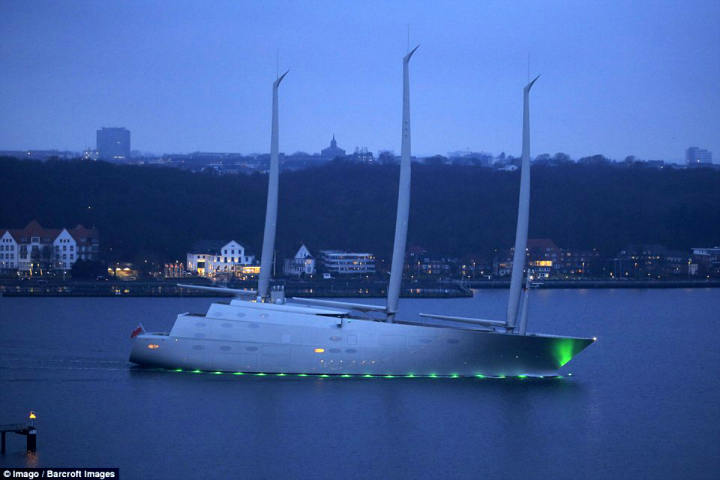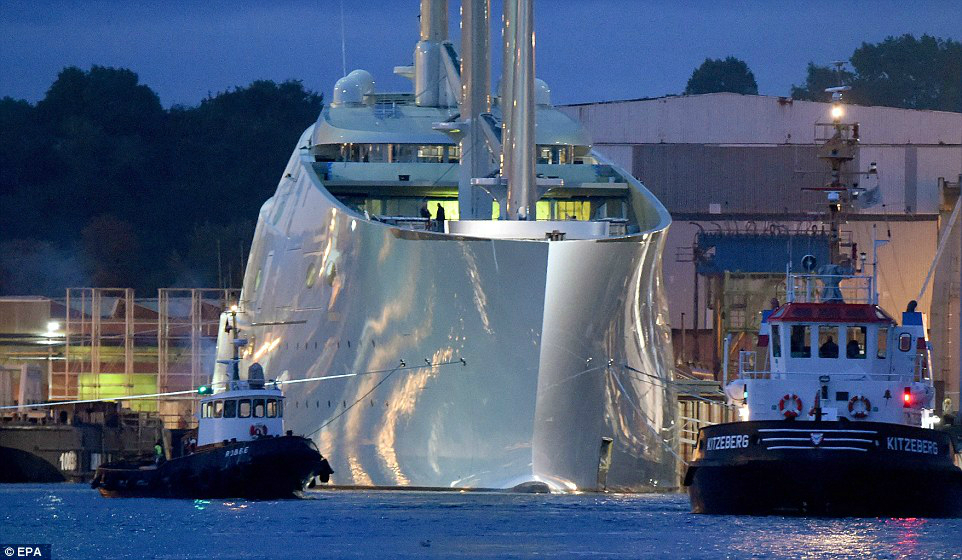
The eight-deck yacht was designed inside and out by Philippe Starck and built by Nobiskrug in the northern German port of the same name. Sailing Yacht A is 469 feet long with an 82-foot beam and a 12,700 gross tonnage. It has first place in sailing yachts locked down. The second longest sailing yacht, the Sea Cloud, is 359 feet long with a 49-foot beam and 2,517 gross tonnage. Sea Cloud, also built in Germany, launched in 1931 by the Krupp Germaniawerft shipyard in Kiel, making her 86 years older than Sailing Yacht A. Compared to motor yachts, only eight in the world are longer than Sailing Yacht A.
The three-masted yacht also has record-length masts. The center or main mast is 100 meters high, or 328 feet — about the length of a football field and one end zone. According to the Daily Mail, the center mast even has a small room. Other outstanding yacht features include bomb-proof glass throughout, and a 193-square foot glass underwater observation pod.
Not relying on sail power alone, Sailing Yacht A has a hybrid diesel-electric propulsion system that produces 9,654 horsepower. Top speed is 21 knots per hour. Running at its 16 knots per hour cruising speed, it has a range of 5,320 nautical miles. The official classification is “sail-assisted.”
The shipbuilder claims an outstanding bill of $10.4 million plus $5.9 million in interest and subcontractor charges. On Monday, Gibraltar court officials told the BBC, “The vessel is under arrest and is currently at anchor in British Gibraltar Territorial Waters.”
According to Melnichenko’s spokesperson, “We are confident that the arrest will be removed within a few days and this unpleasant episode will be over.” It better be because according to the Gibraltar Port Authority, “most arrested ships are sold in a sealed-bids auction within six to eight weeks, once the claim has been proved and judgment given.”
Until the bill is paid, or Sailing Yacht A is sold at auction, the court has put two guards on board to protect it. They are also providing food and water to its 54-person crew.




